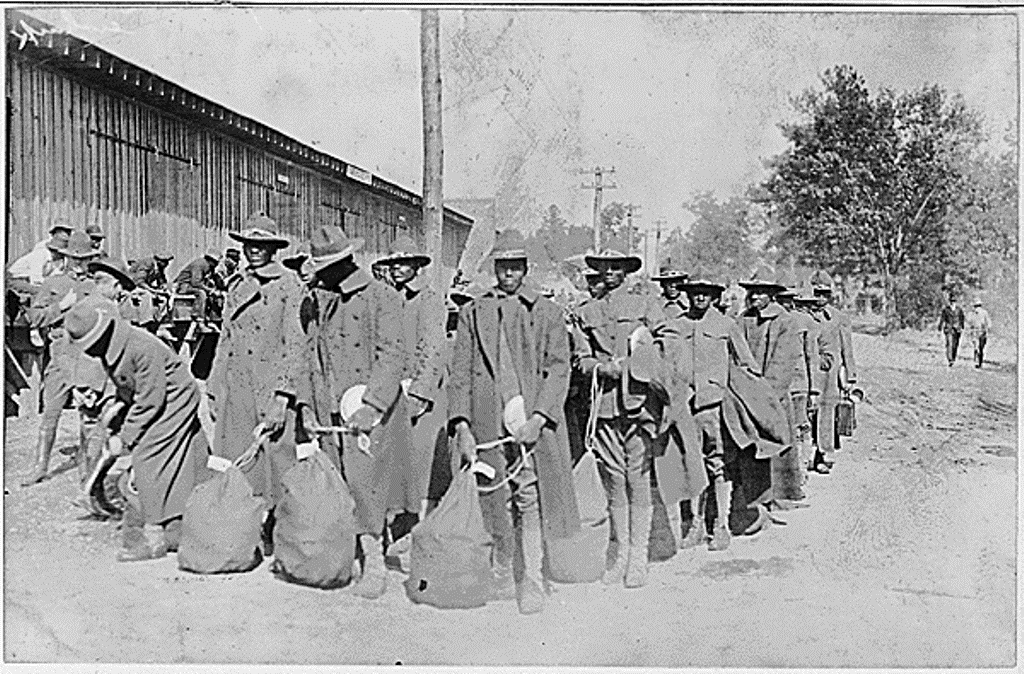There are two important facts which took me weeks to realize about Camp Gordon in WW1. First is the location. Second is the base hospital.
Camp Gordon was actually built in 1917, in fewer than 6 months, on about 2 thousand acres in Chamblee, GA, which is located in DeKalb County.
Map from Atlanta Metro County Maps
Notice how close DeKalb County is to Atlanta. Where is Chamblee?
It's purpose was to train thousands of patriotic Georgians in the basics of infantry combat.
A Veteran's Admin. hospital was eventually built in Atlanta before WW11, so, the cities of Atlanta and Chamblee are used interchangeably when referring to the Camp in WW1. Confusing.
Today, Chamblee is surrounded by the city of Atlanta, but is still an independent community.
Camps, as compared to forts, are generally thought of as temporary Army establishments which will be of no use once an objective has been achieved such as the end of a war.
Most of the pictures for this post are postcards which were mostly found on eBay. All are public domain, but some of the pictures will be identified individually.
Photo from eBay.com
It wasn't very big, but its purpose was narrow--to train infantrymen for battle.
Check out the preparation of soldiers-to-be by clicking HERE
Photo from en.wikipedia.org
Camp Gordon was named after Major General John Brown Gordon of the Confederate Army.
John Gordon would later become a member of the United States Senate and the Governor of Georgia.
Photos from georgiainfo.galileo.usg.edu and atlantahistorycenter.com
Not all barracks and other cantonment buildings were constructed exactly the same from fort to fort and camp to camp.
Once the blueprints had been approved, the entire Camp Gordon was built by local contractors using local materials.
Here, again, is the word cantonment which referred to any building constructed within the border of any military establishment.
Now, we'll add that cantonment also meant temporary.
Photo from eBay.com
This is a well preserved picture of the mess hall. What, no Louisiana Hot Sauce?
Photos from eBay.com and georgiainfo.galiileo.usg.edu
Other cards were watercolors on black and white photos, made to look like the real thing.
Regardless, wouldn't mothers be comforted knowing their sons had such fine uniforms and modern accommodations.
Photos from cardcow.com and eBay.com
So, here's what several million dollars bought in 1917.
The number of buildings constructed was in the hundreds; the number of soldiers trained was in the thousands.
Photo from eBay.com
The number of buildings constructed was in the hundreds; the number of soldiers trained was in the thousands.
Photos from eBay.com
The picture at the lower right shows up in many WW1 photo collections.
The idea of an armored 3-wheeled motorcycle must have seemed ahead of its time, and dangerous.
Photo from playle.com
The attractive top card gives information about a cantonment barracks.
The bottom card shows a more realistic and less idealistic view of a barracks.
Photo from eBay.com
Imagine how these young guys felt. The South was mainly agrarian, with few areas being industrialized.
So, from the farms and other rural areas the volunteers and draftees arrived to a way of life very foreign to them.
For some it was initially a great adventure which would be over shortly.
The movie Gallipoli showed the change in attitudes among young Australians as they encountered the Turks. Click right HERE
Photo from eBay.tv
The card with the airplane shows how relatively small Camp Gordon was.
The main reason it was chosen was its proximity to railroad tracks and Atlanta.
Photo from globalgayz.com
Welcome to Army life.
Photo from libraryhistorybuff.blogspot.com
Tolstoy's War and Peace was probably not on the shelves of this library.
There was Base Hospital # 43 inside Camp Gordon in 1917-18. It was spartan as to heat, water, and food.
It was a cantonment hospital. Wounded soldiers and those with venereal diseases were brought there for treatment.
Photo from georgiainfo.galileo.usg.edu
So, this is part of the basic training received by the soldiers at Camp Gordon.
Little did they know that the bayonets would be necessary.
Photo from georgianinfo.galileo.usg.edu
There was some artillery training at the camp, but for most of the trainees, it was learning Army life and training with a rifle.
Photo from wherehonorisdue.wordpress.com
Yes, you are seeing African-American troops gathered at Camp Gordon. Free men for over 50 years, young African-American men were subject to the draft.
Photo from wherehonorisdue.wordpress.com
Imagine how these guys felt having been ordered to report to the Army and then segregated because of their color.
Photo from wherehonorisdue.wordpress.com
Although drafted, African-Americans were not allowed to participate in combat.
They were sent to Camp Jackson, South Carolina for basic training and then assigned to non-combat duties.
Photo from wherehonorisdue.wordpress.com
Many of our African-American troops were close enough to the front that severe injuries were often incurred.
Photo from georgia.galileo.usg.edu
One of the Divisions created at Camp Gordon during WWI was the All-American 82nd Infantry.
Disbanded after the war, it was re-created during WWII as the 82nd Airborne Division.
Photo from hndb.org
After the war was over, Camp Gordon released thousands of soldiers from active duty until 1919. The need for the camp was over.
Photo from hndb.org.
Once the camp was considered unnecessary, it was subject to salvage and disbanded by 1921.
The memorial to it is presently located at the DeKalb Peachtree Airport, the site of old Camp Gordon.
Photo from hndb.org
Presently, the marker is near another plaque. During WW11, a Naval Air Station was built on this site.
Today, the Dekalb Peachtree Airport stands in the middle of what once was Camp Gordon.
Photo from georgiainfo.galileo.usg.edu
A stab at nostalgia here as two generations overlap.
A Civil War cavalry officer overlooks the troops at Camp Gordon preparing for an overseas war.




.jpg)






















